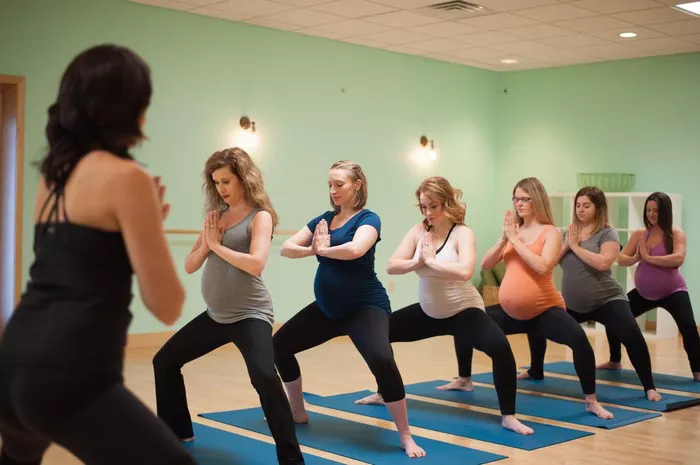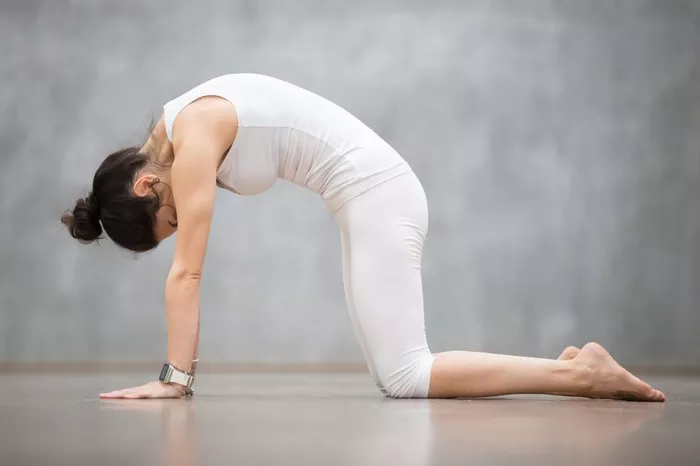Vinyasa flow, often simply called Vinyasa yoga, is a dynamic and increasingly popular style of yoga that links breath with movement in a fluid, continuous sequence of postures. Its flowing nature makes it stand out from other more static forms of yoga like Hatha or Iyengar. But when it comes to determining what level of practice Vinyasa is suitable for, things can get a bit complicated. As a seasoned yoga instructor with years of teaching experience, I can help clarify the answer, shedding light on who can benefit from Vinyasa and how different levels of practitioners can approach this style of yoga.
Understanding Vinyasa Flow
To answer the question of what level Vinyasa flow is suitable for, it’s crucial first to understand what Vinyasa actually is. Vinyasa is a Sanskrit term that can be translated as “arranging in a special way.” It refers to the practice of linking breath with movement in a smooth, flowing sequence. The essence of Vinyasa yoga is connecting breath with body in a way that allows for a seamless, uninterrupted practice that moves with intention and purpose.
In a Vinyasa class, you might flow from one posture to another, such as transitioning from Downward-Facing Dog to Plank Pose, then to Chaturanga, followed by Upward-Facing Dog, and back to Downward-Facing Dog. The transitions between poses are as important as the poses themselves, and the fluidity of movement is what makes Vinyasa such a vibrant practice.
Levels of Vinyasa Flow
Vinyasa is commonly seen as an intermediate or all-level practice, but this description can be a bit misleading. The complexity and intensity of a Vinyasa class can vary widely, depending on the teacher, the sequence, and the individual’s level of experience. Some Vinyasa classes are accessible to beginners, while others are designed for more experienced practitioners. Below is an overview of how Vinyasa flow can adapt to different levels of practice.
1. Beginner-Level Vinyasa
What Does a Beginner Vinyasa Class Look Like?
For those new to yoga or just starting to explore Vinyasa, many teachers offer beginner-friendly Vinyasa classes, which are designed to introduce students to the fundamentals of the practice. These classes typically focus on building a strong foundation in the basic postures and the connection between breath and movement. Teachers will often break down poses, explain the transitions, and offer modifications to help students feel comfortable as they flow through the sequence.
In a beginner-level Vinyasa class, the pace will usually be slower, with more emphasis on alignment and breathwork. While the movements are still linked together, the transitions between poses will be more deliberate, allowing students to get familiar with the flow.
What Should Beginners Focus On?
Breath Control: In Vinyasa yoga, breath is the driving force behind the movement. Beginners should pay close attention to their breath, aiming for slow, steady inhales and exhales. Learning to synchronize breath with movement is one of the most important skills in Vinyasa.
Alignment: Even though the flow is dynamic, alignment is key. Beginners should focus on proper alignment to avoid injury and build strength gradually. Using props like blocks, straps, or blankets can help modify poses.
Strength and Flexibility: Many beginners may find certain poses challenging, as Vinyasa often requires both strength and flexibility. It’s okay to take things slow and use modifications until flexibility and strength improve over time.
2. Intermediate-Level Vinyasa
What Does an Intermediate Vinyasa Class Look Like?
Once practitioners have developed a basic understanding of Vinyasa and are comfortable with the common poses and transitions, they can progress to intermediate-level classes. These classes tend to move at a faster pace and may incorporate more complex variations of basic poses, including arm balances, inversions, or more advanced transitions.
In an intermediate-level Vinyasa class, you might encounter a greater emphasis on refining the breath-to-movement connection, building endurance, and testing the strength and flexibility of the body through longer holds and more challenging sequences. These classes can be physically demanding, and you may experience some level of discomfort as your body adapts to the increased intensity.
What Should Intermediate Practitioners Focus On?
Increased Fluidity and Endurance: At this stage, the flow is generally faster. Practitioners should work on sustaining their breath and maintaining fluidity, even when the pace picks up.
Exploring New Poses and Transitions: Intermediate practitioners should be comfortable exploring new poses, such as balancing postures like Warrior III or more advanced transitions like jumping forward to a seated position.
Mind-Body Connection: Intermediate practitioners should deepen their awareness of the mind-body connection. The practice should be challenging both physically and mentally, requiring focus and concentration.
3. Advanced-Level Vinyasa
What Does an Advanced Vinyasa Class Look Like?
Advanced Vinyasa classes can be intense, fast-paced, and highly creative. These classes may include complex sequences of poses that require considerable strength, flexibility, balance, and control. In an advanced Vinyasa class, you might flow through a series of arm balances, inversions, and deep backbends, all while maintaining a strong connection to the breath.
The focus in these classes is not only on the physical aspect of yoga but also on the deeper, more subtle practices of awareness, energy flow, and meditation. Teachers may encourage students to explore their edges and push beyond their comfort zones, all while practicing mindfulness and presence in each moment.
What Should Advanced Practitioners Focus On?
Mastering Advanced Postures: Advanced practitioners can refine and perfect more challenging poses like handstands, scorpion poses, and complex bind variations.
Breath and Flow: The speed of the flow may increase, and students will need to maintain their breath and focus throughout longer sequences.
Deepening Inner Awareness: Advanced practitioners should work on creating a deeper sense of calm and awareness, regardless of how physically challenging the practice becomes. The goal is to maintain mindfulness and connection, even in difficult or complex sequences.
Modifications and Variations for Different Levels
One of the unique aspects of Vinyasa flow is its adaptability. Students of all levels can participate in a Vinyasa class by making modifications and adjustments to the poses and sequences. Modifying the practice can make it more accessible or more challenging, depending on the needs of the individual.
For Beginners: Using props such as yoga blocks, straps, and blankets can help support the body and make poses more accessible. Slower transitions and more rest between poses are also helpful.
For Intermediate Students: Those who are more experienced may prefer to deepen their practice by experimenting with more advanced variations, such as adding extra breath or holding postures for longer durations. Some students may also work on increasing their flexibility or strength in specific areas.
For Advanced Students: Advanced practitioners can take Vinyasa to the next level by exploring more challenging variations of poses or by adding advanced transitions, such as floating into and out of poses. In addition, advanced practitioners might explore breath control practices such as Ujjayi breath or alternate nostril breathing (Nadi Shodhana) to deepen their focus.
Is Vinyasa Flow Right for You?
Whether you’re a beginner, intermediate, or advanced practitioner, Vinyasa flow can be a great addition to your yoga practice. It’s a versatile and dynamic style of yoga that can be adjusted to suit various fitness levels and personal preferences. Here are some factors to consider when determining if Vinyasa is right for you:
Your Fitness Level: Vinyasa is a physically demanding practice that requires strength, flexibility, and endurance. If you’re new to yoga or have limited physical ability, you may want to start with a slower-paced class or practice other styles first before diving into Vinyasa.
Your Experience with Breathwork: Since Vinyasa relies heavily on synchronizing breath with movement, individuals who are unfamiliar with yogic breathing techniques may find it challenging at first. However, as you progress, you’ll develop a stronger connection to your breath, which will make the practice easier and more enjoyable.
Your Goals: Vinyasa is great for those looking to build strength, increase flexibility, improve cardiovascular health, and connect mind and body. If your goals align with these outcomes, Vinyasa can be an excellent fit.
Physical Limitations or Injuries: If you have existing injuries or physical limitations, it’s important to practice Vinyasa mindfully and listen to your body. Modifying poses and seeking guidance from an experienced teacher can help ensure your safety during practice.
Conclusion
Vinyasa flow is a diverse and adaptable style of yoga that can suit practitioners of all levels. Whether you’re just beginning your yoga journey or have been practicing for years, Vinyasa can offer numerous benefits, including increased strength, flexibility, balance, and mental clarity. The key to practicing Vinyasa effectively is understanding where you are in your journey and choosing classes that match your experience level, or making modifications when needed.
As a practitioner, remember that yoga is not about achieving a certain level of perfection but about continuous growth and self-awareness. With consistency and mindful practice, Vinyasa can help you deepen your yoga practice and explore your full potential, regardless of your experience level.
Related Topics:






















